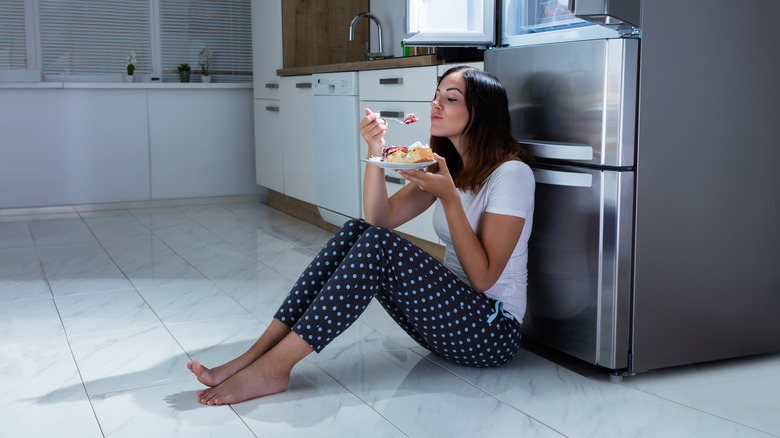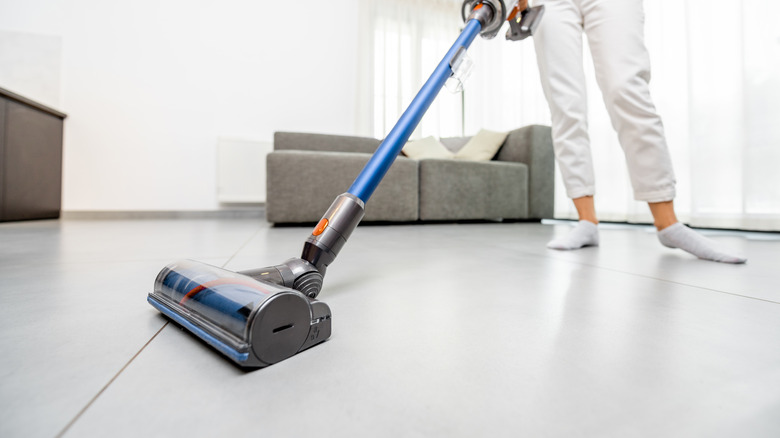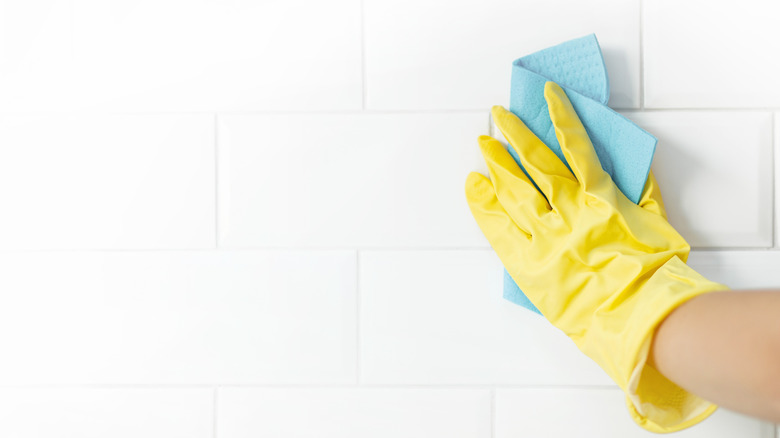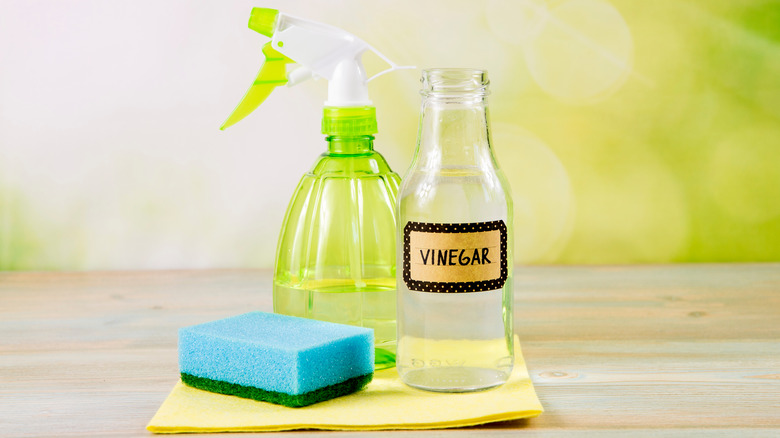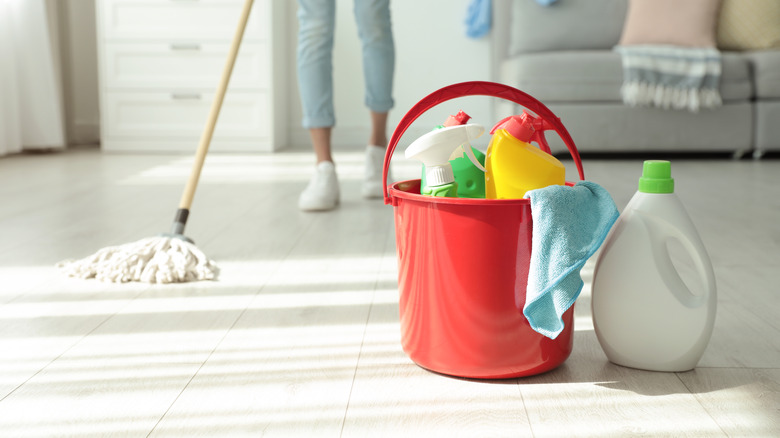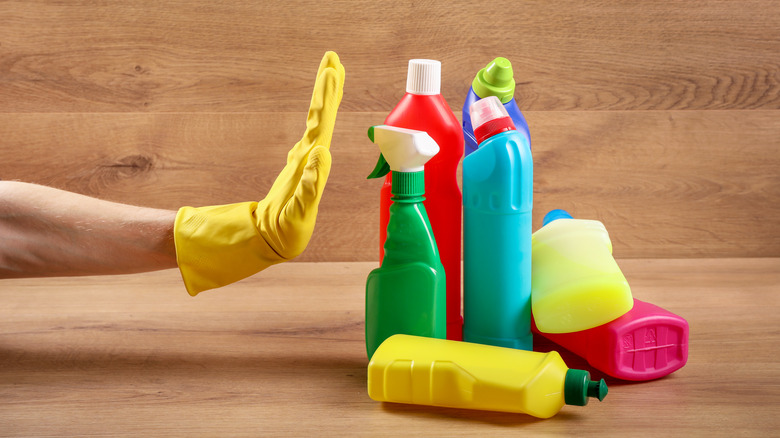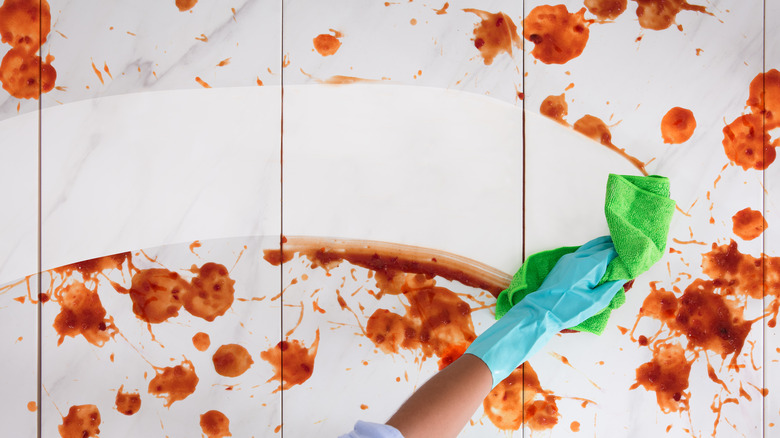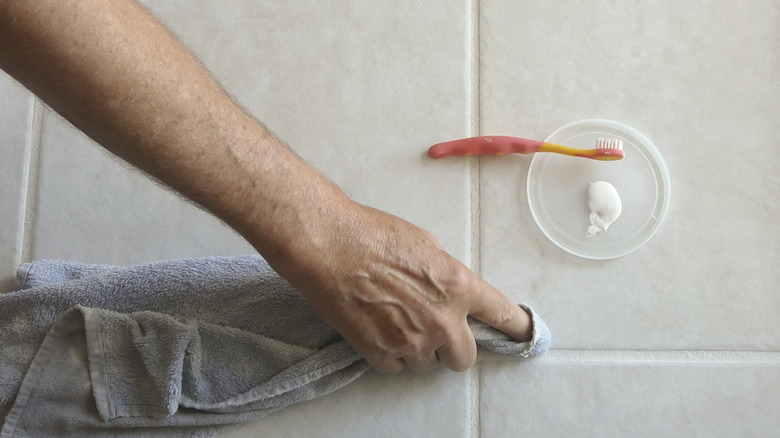Basics On Cleaning Porcelain Tile
We may receive a commission on purchases made from links.
Porcelain tiles can be used in nearly any part of your home — be it in the bathroom as shower tiles, in your kitchen as a countertop, or even chosen as your flooring, Along with their multipurpose use, porcelain tiles are also one of the easiest materials to clean. They are low maintenance and have a variety of hygienic benefits.
Whytile.com shares that porcelain tiles are bacteria resistant, which mean they are an inhospitable surface to bacteria. They also prevent the inhabitants of mold, fungi, and even viruses. Porcelain is also impenetrable to allergens, like dust, dirt, mites, and pollen. Along with their health benefits, porcelain tiles are scratch, stain, and water resistant. These are great advantages, but, although porcelain may be easy enough to care for, there are still some tips and techniques you can use to ensure your porcelain tiles are well maintained and look good for years to come.
1. Maintaining dirt- and dust-free tiles
Before attempting to clean your porcelain tiles with any type of cleaner or technique, it's important to rid your tiles of dirt and dust. For porcelain floor tiles, this can be done by either vacuuming or sweeping your tiles. Prima Porcelain recommends using a dry mop on the floor instead of a broom when sweeping, because it will collect more debris from the surface, providing your tiles with better day-to-day protection.
It's important to maintain dirt- and dust-free tiles daily because it will protect your tiles and allow them to look their very best for longer periods of time. Even though porcelain tiles are highly resistant to scratches and stains, that doesn't mean they can't still occur. It doesn't hurt to further protect your floor from potential damage with a day-to-day cleaning habit. Plus, this daily maintenance makes the process of deep cleaning quicker and easier.
2. Water is enough
Another easy day-to-day technique for light maintenance is to simply wipe your tiles down with clean water. For small spills and lightly soiled tiles, this is a quick way to keep your tiles looking fresh and clean on a daily basis.
Start by clearing your surface by brushing away crumbs or sweeping up dust and dirt. Next, wipe down the area with clean water. No harsh chemical or extra solutions will be need for this quick and easy method. If the tile is part of your flooring, this step can also be done with a mop. For best results, Whytile.com recommends using a flat mop instead of a sponge mop to prevent dirty water from getting into the grout lines of your tiles. Once the area is clean, allow the tiles to dry by wiping them down with a microfiber cloth or simply letting them air dry.
3. Vinegar and warm water
If you want to give your tiles a deeper clean, but still want to avoid chemicals, vinegar is the best way to go. Vinegar is a tough, yet natural, cleaning solution that can be used for a wide variety of household-cleaning hacks. This vinegar technique naturally cleans the majority of tough messes on your porcelain tiles. Although day-to-day cleaning requires nothing more than a fast sweep or vacuum, along with a quick water clean-up as spills come along, Bob Vila recommends giving your porcelain tiles a deeper clean at least once a month.
Per The Tileist, when using vinegar as a deep-cleaning agent for your porcelain tiles, start by filling a gallon bucket with hot water, then stir approximately ¼ cup of vinegar into the water. Use the solution to mop or sponge down the tile area. Finish by rinsing the tiles with clean water and wipe dry with a towel.
4. Safe cleaners
Although vinegar is a safe and effective solution to use when cleaning porcelain tiles, sometimes you may want something stronger to give your tiles an even deeper clean. There are a variety of porcelain tile cleaners you can choose from and it can be overwhelming.
The Spruce researched the many cleaning options on the market, evaluating the effectiveness and the safety of the cleaners' ingredients. Based upon the results, the publication recommends Bona Hard-Surface Floor Cleaner as a great option for both glazed or unglazed porcelain. It is pH balanced, water-based, and Greenguard Gold Certified — meaning it has low chemical emissions and is, therefore, a great option for those who are concerned about the environment or personal safety. It is also known not to leave any residue behind, meaning that your tile remains smooth. A weekly (or even biweekly mopping) is enough to keep your porcelain tiles maintained.
5. Cleaners to avoid
According to Flooring America, porcelain is made by exposing clay to extreme heat, giving the tile a water-resistant quality, similar to that of glass. Although porcelain is resistant to a lot of things, certain chemicals can break down its surface and increase its ability to absorb water. As the surface begins to break down, the tiles slowly become absorbent, which can lead to water damage to your tiles. Prima Porcelain mentions that the chemicals you need to avoid include ammonia, bleach, and acidic cleaners.
These chemicals are also known for eroding grout that holds the tile together. The erosion of grout loosens the tiles and allows water to soak between and underneath the tiles, leading to moisture build-up. To avoid these issues, avoid harsh chemicals when cleaning your porcelain tiles. For everyday cleaning, only use warm water, as mentioned above, and, when deep cleaning, take advantage of gentle and natural cleaning options.
6. Getting rid of stains
Although porcelain tiles are naturally resistant to staining, sometimes kitchen accidents happen where a stain penetrates the surface of the tile, making the stain difficult to remove. Even with stubborn stains, it is important to avoiding harsh chemicals, like bleach. Therefore, Build Direct recommends bleach alternatives, such as 3% hydrogen peroxide or muriatic acid.
When using hydrogen peroxide, make a paste by mixing one-part peroxide with two-parts baking soda. Apply the paste onto the surface of the stain and let it sit for 30 minutes before scrubbing and rinsing the stain away. Although muriatic acid has been used on stains by professionals for years, it needs to be used with precaution. Ensure your area has proper ventilation when using this product. Dilute the acid with water until there is at least five times more water than acid. Then apply the solution to the stain and scrub clean with a toothbrush or soft-bristle brush. Once the stain is gone, finish by washing the area with clean water.
7. Cleaning grout lines
Whether your porcelain tiles are on your shower walls or on the kitchen floor, there will always be grout holding the tiles together. It is important to clean and maintain these grout lines. This part can be a very stubborn area to clean. However, Real Simple provides a very simple and gentle solution that won't damage the surface of your porcelain tiles.
Start by scrubbing your grout lines with warm water to remove any surface dirt or grime. Next make a paste by using hydrogen peroxide and baking soda. Depending on your location, grease may also be stuck on your grout lines. If that is the case, add in a few drops of regular dish soap to help further fight the grease. Allow the paste to sit on the grout for 15 to 20 minutes before scrubbing the lines with a brush. When you are finished scrubbing, mix a few drops of dish soap into some warm water and wipe up the solution.
